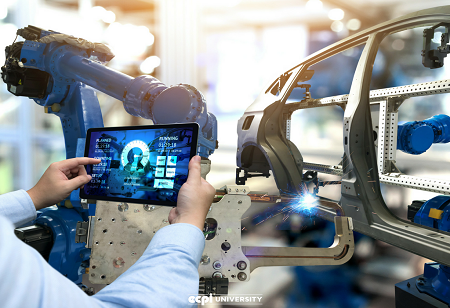Institute of Small Enterprises and Development (ISED) has recommended a decentralized smart manufacturing approach to be followed by the automotive sector to continue its growth amid the pandemic. The suggestion has been given through India Micro, Small and Medium Enterprise Report (MSMER) 2020 released by ISED Small Enterprise Observatory (SEO). MSMER is the annual survey on the state of MSMEs in the country. The report is written by a team of experts at the Observatory and has been overseen by a multi-stakeholder Focus Group. The project has been facilitated by National Partnership Network (NPN) which includes all major MSME stakeholders.
The report has said that the strategy can benefit both small and large firms in the
automotive sector. Emphasizing the need for indigenization with strategic reorientation, the report calls for deep localization and hails its potential for the automotive sector.
Smart manufacturing is a broad category employing computer integrated production, high levels of adaptability, rapid design changes, digital information technology and rapid technical training of the workforce. It is implemented to derive the benefits like on-demand production, optimization of supply chain, and recyclability.
The report advocates strategic thinking leading to a converged focus on subsectors with an aim of decentralized production. The new strategy needs to be based on the experience of vendor development over the past two decades, said the report. Despite the broad based growth of the automotive sector as a whole, the vendor base has not contributed much to the technological absorption and local capabilities, it adds.
While the Indian automotive sector was local traditionally, it witnessed a transformation with the change in technology, for example the transition from BS4 to BS6. When BS4 was in use, the local contribution was around 95 percent. However, with BS6 coming in, a lot of systems had to be imported.
In the past, there were some restrictions to localization as some parts came only from a certain area. Today, around 40-50 percent of the parts are imported. Hence, giving a boost to localization will provide the necessary impetus.
